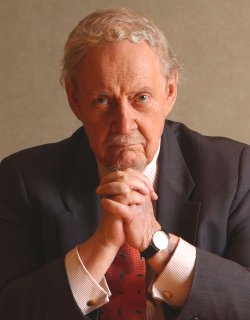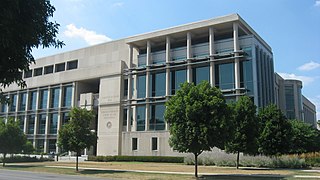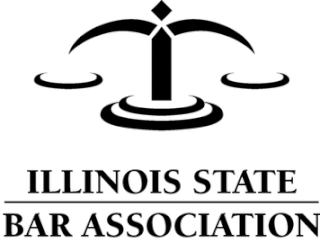
Robert Heron Bork was an American legal scholar who served as solicitor general of the United States from 1973 until 1977. A professor by training, he was later acting United States Attorney General and a judge on the U.S. Court of Appeals for the D.C. Circuit from 1982 to 1988. In 1987, President Ronald Reagan nominated Bork to the U.S. Supreme Court, but the Senate rejected his nomination after a contentious and highly publicized confirmation hearing.

In the context of United States law, originalism is a theory of constitutional interpretation that asserts that all statements in the Constitution must be interpreted based on the original understanding. This concept views the Constitution as stable from the time of enactment and that the meaning of its contents can be changed only by the steps set out in Article Five. This notion stands in contrast to the concept of the Living Constitution, which asserts that the Constitution should be interpreted based on the context of current times, even if such interpretation is different from the original interpretations of the document. Originalism should not be confused with strict constructionism.

The Indiana University Robert H. McKinney School of Law is located on the campus of Indiana University – Purdue University Indianapolis (IUPUI) in Indianapolis, Indiana, the urban campus of Indiana University. In the summer of 2001, the school moved to its new building, Lawrence W. Inlow Hall. IU McKinney is one of two law schools operated by Indiana University, the other being the Indiana University Maurer School of Law in Bloomington. Although both law schools are part of Indiana University, each law school is wholly independent of the other. According to IU McKinney's 2019 ABA-required disclosures, 59% of the Class of 2018 obtained full-time, long-term, J.D.-required employment within ten months after graduation.

John Daniel Tinder is a retired United States circuit judge of the United States Court of Appeals for the Seventh Circuit.
Steven Gow Calabresi is an American legal scholar and the Clayton J. and Henry R. Barber Professor of Law at Northwestern University. He is the co-chairman of the Federalist Society. He is the nephew of Guido Calabresi, a U.S. Appellate judge and former dean of the Yale Law School.
Dawn Elizabeth Johnsen is an American lawyer and the Walter W. Foskett Professor of Constitutional law, on the faculty at Maurer School of Law at Indiana University in Bloomington, Indiana. She previously served in the Biden administration as Acting Attorney General at the Office of Legal Counsel, having been appointed on January 20, 2021 by President Joe Biden, to return to the role she previously held in the Clinton administration. She was succeeded in that role in a permanent capacity by Christopher H. Schroeder, and is currently serving as the Principal Deputy Assistant Attorney General in the same office

The Illinois State Bar Association (ISBA) is among largest voluntary state bar associations in the United States. Approximately 28,000 lawyers are members of the ISBA. Unlike some state bar associations, in which membership is mandatory, ISBA membership is not required of lawyers licensed to practice in Illinois and ISBA membership is completely voluntary. The ISBA is headquartered in Springfield, Illinois. It also has an office in Chicago, Illinois.

The Indiana University Maurer School of Law is located on the campus of Indiana University in Bloomington, Indiana. The school is named after Michael S. "Mickey" Maurer, an Indianapolis businessman and 1967 alumnus who donated $35 million in 2008. From its founding in 1842 until Maurer's donation, the school was known as the Indiana University School of Law – Bloomington.
The Indiana State Bar Association (ISBA) is a voluntary bar association for the state of Indiana. Unlike some state bar associations, in which membership is mandatory, ISBA membership is not required of lawyers licensed to practice in Indiana. The ISBA is headquartered in Indianapolis, Indiana. It includes among its members lawyers, judges, paralegals, law librarians, law students, and court administrators. About 85% of the practicing lawyers in the state are members.

Loretta Hogan Rush is an American lawyer and judge who has served as an associate justice of the Indiana Supreme Court since 2012 and as Chief Justice since 2014.
Frank Nelson Richman was an American lawyer, politician, and judge who served as a justice of the Indiana Supreme Court from January 6, 1941, to January 6, 1947. Richman also participated as a judge in the Nuremberg trials, as one of the judges of the Flick trial.
Fred Carl Gause was an American lawyer, politician, and judge who served as a justice of the Indiana Supreme Court from November 1, 1923 to January 5, 1925.
Jon David Krahulik was an American lawyer, politician, and judge who served as a justice of the Indiana Supreme Court from December 14, 1990 to October 31, 1993.
Louis Blasdel Ewbank was an American lawyer, politician, judge, and jurist. He served as a justice of the Indiana Supreme Court from January 1, 1920 to January 3, 1927. He was considered by President Warren G. Harding as a potential nominee to the U.S. Supreme Court.
Norman Frank Arterburn was an American lawyer, politician, and judge who served as a justice of the Indiana Supreme Court from May 23, 1955 to May 13, 1977.
Walter Dennis Myers Jr. was an American lawyer, politician, and judge who served as a justice of the Indiana Supreme Court from January 7, 1963 until his death on June 2, 1967.

Addison Clay Harris was a lawyer and civic leader in Indianapolis, Indiana, who served as a Republican member of the Indiana Senate and a U.S. Envoy Extraordinary and Minister Plenipotentiary (ambassador) to Austria-Hungary. The Wayne County, Indiana, native graduated from Northwestern Christian University in 1862 and was admitted to the bar in 1865, the same year he established a law partnership with John T. Dye in Indianapolis. Harris was a founding member (1878) and president of the Indianapolis Bar Association; a founder and president of the Indiana Law School, which was a forerunner to the Indiana University Robert H. McKinney School of Law in Indianapolis; a presidential elector in 1896; president of the Indiana State Bar Association (1904); a member (1905–1916) and president of Purdue University's board of trustees; and a member of the Indiana Historical Society and the Columbia Club.
India Crago Harris (1848–1948), a native Connersville, Fayette County, Indiana, United States, was an art patron and civic leader in Indianapolis, Indiana, who served on the Art Association of Indianapolis's board of trustees, including roles as recording secretary (1893–1899) and its fifth president (1904–1907). The Art Association was the predecessor to the Indianapolis Museum of Art and the Indiana University – Purdue University Indianapolis's Herron School of Art and Design). During her tenure as president, Harris laid the cornerstone for the association's first new building, named the John Herron Art Institute, at 16th and Pennsylvania Streets. In addition, Harris established Herron's reference library. As the wife of Addison C. Harris (1840–1916), who was a prominent Indianapolis lawyer and a civic leader, she accompanied him to Vienna, Austria, during his diplomatic service as U.S. Envoy Extraordinary and Minister Plenipotentiary (ambassador) to Austria-Hungary.
Paul George Jasper was an American lawyer, politician, and judge who served as a justice of the Indiana Supreme Court from January 3, 1949 to March 31, 1953.
Lauren Kay Robel is an American academic administrator and legal scholar working as the Val Nolan Professor of Law at the Indiana University Bloomington.







